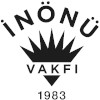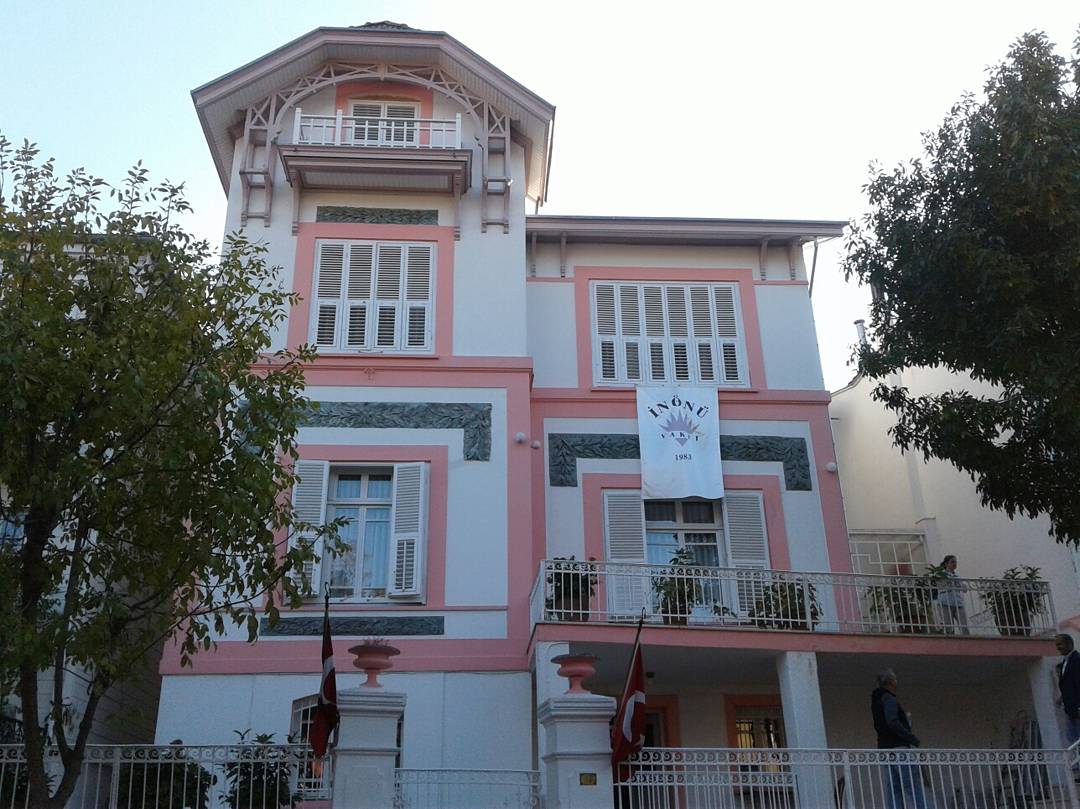İsmet İnönü’s support of and contributions to national educatie a specifice the university a specific scientific direction.on, especially higher education are too numerous and great to be confined to an article of a few pages. Before discussing the determinative influence of İsmet İnönü on higher education, especially university policy, we will briefly dwell on his support of other areas of national education.
In The First National Education Council (July 17-19, 1939), issues of higher education, especially university, were also discussed and some important decisions were taken.
In the council decision, the aim of university education was determined as follows: The aim of a university is to attempt to raise ethical men of science, profession and art, who have the ability of good observation, correct thinking ,good analysis and experiment, who are equipped with a mentality that has made scientific methods a habit ,and who advance on the road to development guided by the excitement of a lofty ideal. (1)
Again in the same council, Prof. Dr.Vehbi Sarıdal expressed his longing for an autonomous university thus:
The state and the university: the university is not in the structure of the large social organ we call the state. In fact, it is the state that establishes the university, that designates its location, that gives it funds, that appoints and commissions its professors. However,the state itself should see this established, created university as an independent unattached scientific institution. The university cannot affect the state directly, its effect is indirect. The effect of the state on the university is also indirect. The state, according to our thinking and understanding, cannot give the university a specific scientific direction. It cannot dictate a certain stance in the scientific statements, anayses and researches. This is how Turkey’s view of a university should be. (2)
After Berlin and Paris, a student inspectorship was opened in London.(1939). This was a very important developement for the students who would be sent abroad for education.
Today’s Gazi University Vocational Training Faculty, was opened in the academic year1934-1935, under the name Vocational Teacher School for Girls and was later named Technical Teacher School for Girls.
Similarly, today’s Gazi University Technical Education Faculty, was opened in the academic year 1937-1938, under the name Vocational Teacher School for Men and later became Technical Teaching Academy for Men. For many years, these schools were the only educational institutions that trained teachers for vocational-technical secondary schools.
On September 27, 1941,Rüştü Uzel was appointed to the Undersecretariat of Professional Education in the Ministry of Education.
– The Institute of Turkish Revolution History was established. (April 4, 1942)
– The Second National Education Council met.(February15-21, 1943)
– Ankara Science Faculty was founded. (September 17, 1943)
– İstanbul Technical University was founded.(July 12, 1944)
– Ankara Medical Faculty was founded. (November 8, 1945)
– The Law on Universities was accepted (June 13,1946)
– Ankara University was founded (June 18, 1946)
– The Third National Education Council met. (December 2-10, 1946)
– The Fourth National Education Council met. (August 22-31, 1949)
In accordance with statute 660, Suna Kan and İdil Bİret were sent abroad on the state account for music training.
The Establishment of the first autonomous University
The revolutionist cadre of the Republic, headed by Mustafa Kemal and İsmet Paşa, considered education as the infrastructure of Turkish Revolution. While all the Ottoman institutions were restructured , deep-rooted innovations were expected in the İstanbul Ottoman University (Darülfünun).
In this context, in 1923, there was a considerable increase in the salaries of Darülfünun teachers. The first legal arrangement concerning Darülfünun during the Republic period was realised in1924 with the acceptance of statute no.499 . With this statute Darülfünun was given a legal entity. The İstanbul Darülfünun Regulation, prepared according to this statute, gave “ scientific” and “administrative “ autonomy, and the name of the moslem theological schools (medrese) was changed to faculties. Moreover, the government ,which cut down all its expenses and made a deduction in the salaries of the public servants during the 1929 World Economic Depression, did not touch the salaries of the Darülfünun teachers.
Despite all these goodwill attempts, Darülfünun failed short of the revolutionary, dynamic advancements of the Republic. Consequently, the İstanbul Darülfünun was abolished according to statute no.2252 dated June 6, 1933, and İstanbul University was founded on July 31,1933.
During the establishment of the new university, the Ministry of Education emphasized the importance of three issues. The first was to establish a close relation between education and the revolution, the second was to direct the university to work on the problems of the country, and the third was to closely regulate the new university. In other words the university was not given administrative and financial autonomy. According to this statute, the university rector, the secretary general of the university, professors and associate professors were appointed and dismissed by the Ministry of Education. This control went as far as asking for attendance sheets from academic members. During this period, science and scientists received irrecoverable wounds in the society. However, the wrong applications on this issue gradually began to be understood.
The fact that a faculty membership was different from other professions began to receive a general acceptance in the society. Moreover, it began to be accepted that university instructors had to concentrate on scientific research and publication and that they should be the creators not only of today’s science but also the science of the future. Within this context, it was deemed necessary that assistants should be subjected to laws that are different from those applied to civil servants.
It was undoubtedly for this reason that the basic aim in the University Law no.4936 was to highlight scientific research, scientlflc and administrative autonomy; to actualise a participatory and democratic administration; to educate intellectuals who possess a universally powerful understanding of science.
The following rationale was worth noting in the motion that the government presented to the TGNA: “ In order that the present three higher education institutions ( İstanbul, Ankara and İstanbul Technical Universities) and the ones that we will found in the future, can function with democratic principles required in a democratic society and can develop within themselves in a way directly responsible to the society, it is deemed necessary to take precautions that will provide new development possibilities in the following two aspects:
a.To be autonomous in all their functions,
b.To designate their instructors so as to enable them to be educated and and to work within certain rules. (3)
The most basic characteristic of the University Law no.4936, is its being the first law to grant autonomy to universities during the Republic period.
While there were fascistic administrations in Europe before and during WW2, Turkey moved on to postwar democracy. With the leadership of İsmet İnönü Turkey moved on to multiparty democratic order. Parallel to these developments in politics, the understanding of a free, autonomous and participatory university developed in the Turkish society. With the Law dated 1946, universities were given administrative and scientific autonomy and legal entity, and universities became institutions with supplementary budgets, but the condition of The Minister of Education being the head of the universities could not be prevented. This was explained by the Minister of Education Hasan Ali Yucel during the discussion of the law in the TGNA as follows:
“ The reason why the Ministers of Education are the head of universities is so that they can answer you in the issues related to the universities as your representative and as a responsible person for these institutions whose budgets will be brought before your high presence. And this does not in any way constitute an intervention into the education interior workings of the university.” (4)
The importance of the university law no.4936, is that it is a pioneer and provides a strong infrastructure for later laws.
It would be wrong to say that there were no problems during the years when this law was enforced. For example, in 1947 three faculty members were dismissed from the Language and History-Geography Faculty. However, the most negative developments took place after 1950, during the DP government. In 1956 , Prof. Dr. Turhan Feyzioğlu, the Dean of the Political Science Faculty, was taken under the order of the ministry by the Minister of Education Prof. Ahmet Özel. Later on, Nail Kubalı, the professor of Constitutional Law at İstanbul University Law Faculty was dismissed. Prime Minister Menderes went further and at the Turgutlu Demonstration on May18,1960, said “ these black cassock professors prevent the advancement of associate professors and pressurize them so as to protect their own positions.” During the fight between DP and the University, the opposition leader İsmet İnönü defended university autonomy. On the issue of DP government’s intervention in university autonomy he said: We consider the autonomous university as one of the basic elements of a democratic regime. The government wishes to turn the autonomous university into a voiceless and useless element. This is wrong. It is dangerous.” (5)
Clause no.120 of the 1961 Constitution which is a product of the 1960 revolution, concerns the university. Within the framework of this clause, law no115 which was accepted by the National Unity Committee, enlarged the autonomy granted by law 4936. However, with the law no.114 which was accepted on the very same day, 147 faculty members were dismissed from their positions at the university. This grave error was rectified by another law enacted on April 18,1962 during İsmet İnönü’s Prime Ministry and the 147 faculty members returned to their previous positions.
A similar situtation took place after the military intervention of March 12, 1971. The military administrators of that period, headed by the Chief of General Staff Memduh Tağmaç, wanted to limit or completely revoke university autonomy. However İsmet İnönü, the chairman of CHP, argued against this view with the following words: “Members of the university are people who have been raised and educated in the best manner. How can we accept that they are unable to govern themselves?” whereupon the military administration of May12, 1971, did not dare revoke university autonomy.
This brings to mind the following: Ord.Prof. Dr. Hirsch, who is the writer of the 1480 paged and two volumed book titled World Universities and the Development of Universities in Turkey , said , after seeing The Higher Education Council (YÖK), “ Every general is not Atatürk.” In that case this is also a reality : “Is it possible to find an İsmet İnönü to protect university autonomy after each military coup?”
REFERENCES
1) Tahir Hatipoğlu, Türkiye Üniversite Tarihi, 1845-1997, Selvi Yayınevi, Ankara, 1998, p 172-173.
2) Tahir Hatipoğlu, Türkiye Üniversite Tarihi, 1845-1997, Selvi Yayınevi, Ankara, 1998, p.173
3) Ernst E. Hirsch, Dünya Üniversiteleri ve Türkiyede Üniversitelerin Gelişmesi, Cilt 2, p .815.
4) Tahir Hatipoğlu, Türkiye Üniversite Tarihi, 1845-1997, Selvi Yayınevi, Ankara, p 176
5) Tahir Hatipoğlu, Türkiye Üniversite Tarihi, 1845-1997, Selvi Yayınevi, Ankara, p.182






